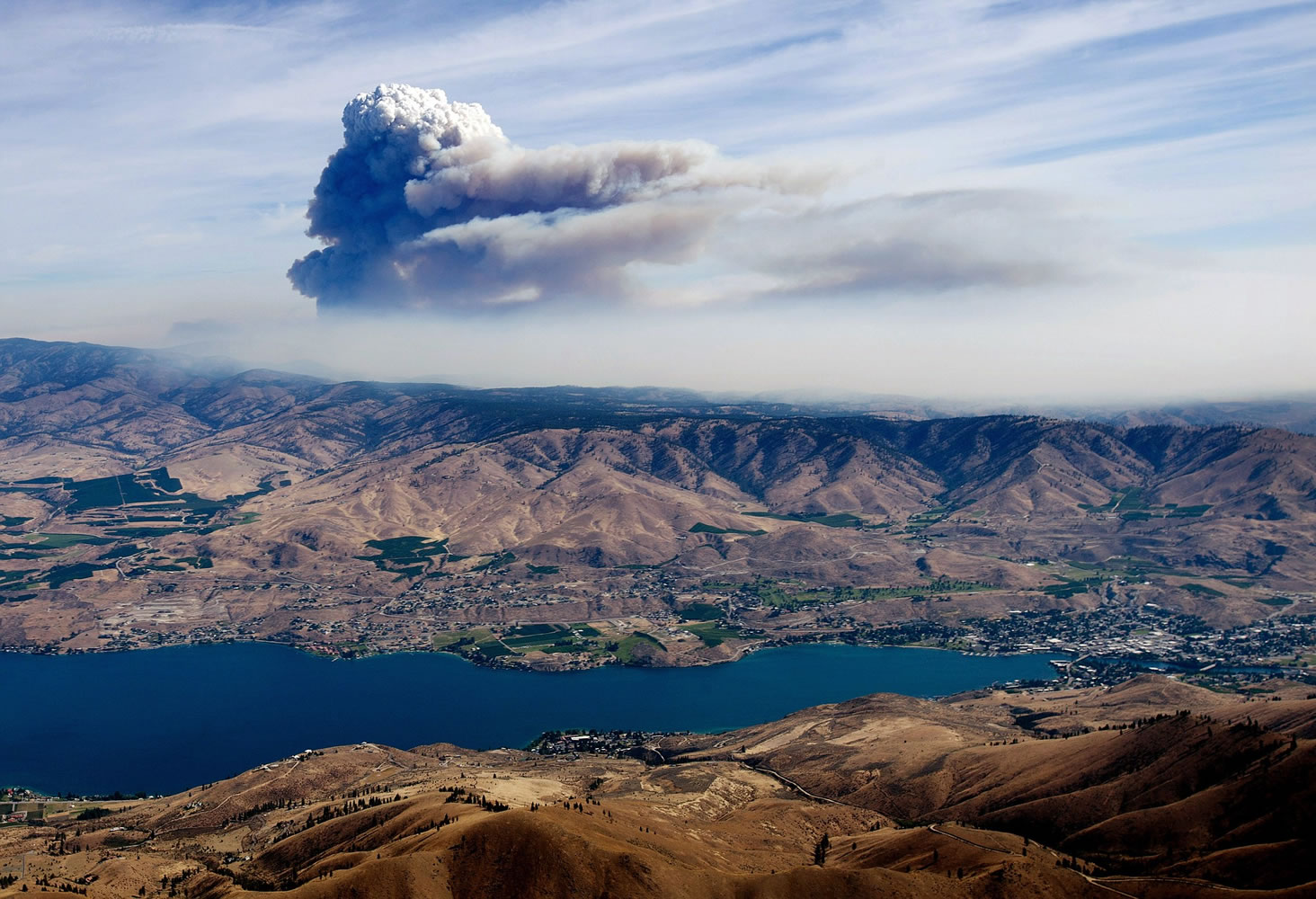PORTLAND — Washington and Oregon could be in for a longer, more intense fire season this year than usual, regional fire officials said Tuesday.
Crews are bracing for a difficult season amid conditions unlike anything seen in decades, scientists say. An unusually warm winter left the region with a dismal mountain snowpack. Many places that are normally buried in snow this time of year are instead “bare, dry and dusty,” said John Saltenberger, fire weather program manager with the Northwest Interagency Coordination Center.
Saltenberger and others gathered Tuesday at the coordination center’s office in Portland to discuss the upcoming fire season. The bottom line: Conditions are ripe for large, potentially damaging wildfires across the region this year. That risk will only increase as the summer progresses. But officials never know for sure what the season will bring — particularly in such an unusual year as this, said Mike Powell, a fire analyst.
“It’s a tough science,” Powell said. “If we haven’t seen it before, we’re not totally sure what to expect.”
Much will depend on lightning, which is a primary cause of wildfires each year. Higher-than-normal lightning totals led to active fire seasons during the past two years, Saltenberger said. Even a more typical number of strikes this year could still produce a nasty fire season because of drought conditions across the region, he added.
Washington Gov. Jay Inslee declared a statewide drought emergency last week, the first in a decade. Several counties in Oregon also have reached drought status, with more likely to follow.
And those conditions extend far beyond the Northwest, Saltenberger said.
“By and large, drought is the word for the western United States,” he said.
Human care can help
It takes thousands of firefighters to battle the region’s wildfires each year. The U.S. Forest Service has normal staff and resource levels heading into this season, said spokesman Glen Sachet. Resources also can be shifted based on priority, he said.
But crews can be stretched thin at times. That’s why officials stress the need to limit human-caused fires — all of which are preventable, Sachet said.
“Every one of those human-caused fires we can prevent allows us to devote more resources to natural fires,” Sachet said.
In Washington, the state Department of Natural Resources has requested additional funding to help with firefighting efforts, expecting another challenging season. Last year, Washington saw the biggest wildfire in its history when the Carlton Complex Fire burned more than 250,000 acres.
Long-term forecasts call for a warmer, drier-than-usual summer in the Northwest, Saltenberger said. He and others urged people to do all they can to minimize risk.
“Be careful with fire — always,” Saltenberger said. “Especially this summer.”




